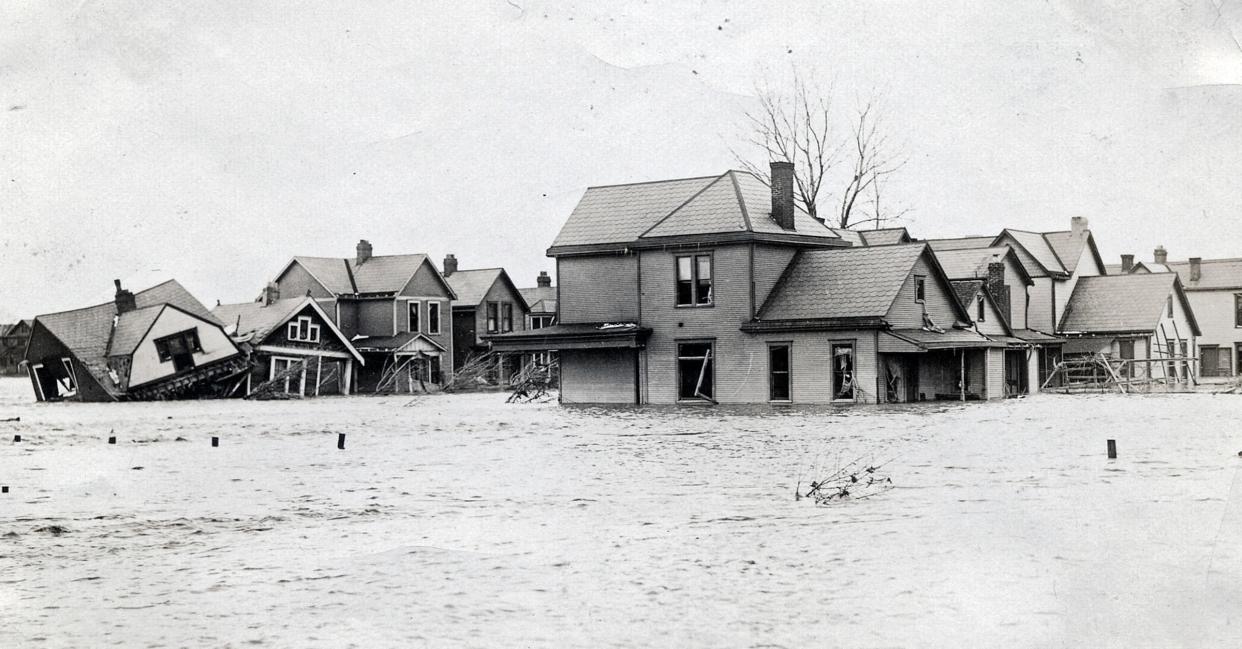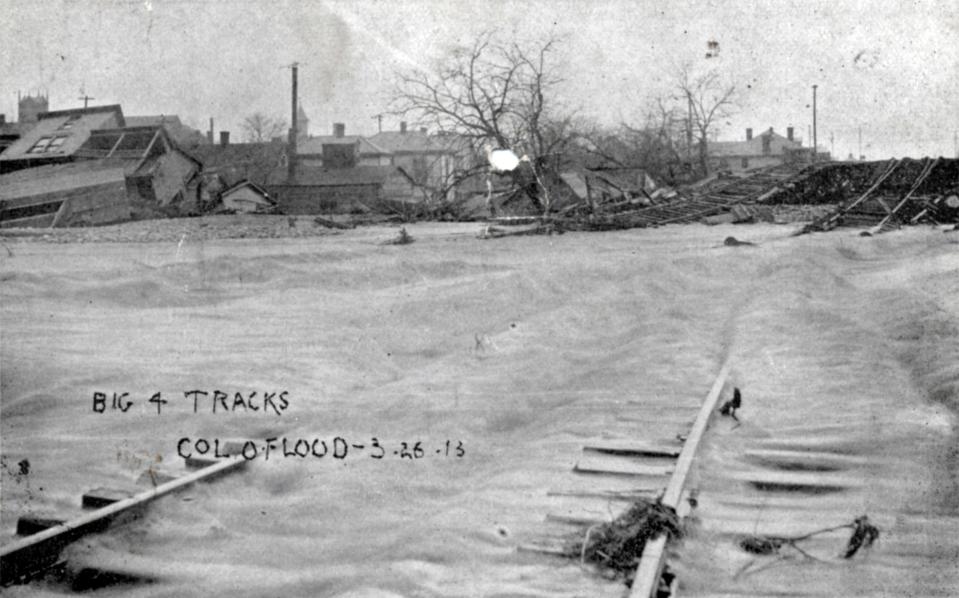Remembering the Great Flood of 1913 in Columbus and around Ohio 110 years later

On March 23, 1913, Ohioans were in for an unexpected and tragic weather event, the Great Flood of 1913.
The disaster, considered the most catastrophic weather event in Ohio's history, left behind destruction and loss of life.
The flood lasted from Easter Sunday, March 23, until March 27, and caused the deaths of at least 467 people. Columbus and Dayton suffered the worst from the flood, with 93 and 123 fatalities, respectively. Chillicothe had 22 deaths and Delaware reported 18.
The storm dropped as much as 10 inches of rain, causing streams, creeks and rivers across Ohio to flood and leading to the crumbling of levees in the Miami and Scioto river valleys.
The flood destroyed nearly 500 buildings in Columbus and damaged over 4,000 more, with 15 to 20 feet of water drenching areas west of the Scioto River. The Broad, State and Town street bridges were washed away by the strong currents, separating east from west. Residents were trapped by the floodwaters in their homes or in trees.

The situation was even worse in Dayton, where some streets were topped with more than 20 feet of water. The Dispatch also reported that fires were a significant concern and partly destroyed Dayton's business block.
Throughout Ohio, 40,000 homes were flooded, with infrastructure damage alone estimated at $3 billion in today's dollars.
The tragedy led to the first joint watershed planning and flood-control measures. In the Columbus area, the Franklinton floodwall went up, as well as dams and reservoirs like Delaware Lake and Alum Creek Lake.
Then-Governor James Cox sent out requests for aid to the secretary of war, Pennsylvania's governor, Indiana's governor, and President Woodrow Wilson. He asked for tents, supplies, rations and physicians, stating that "in the name of humanity, see that this is granted at the earliest possible moment." The situation in Dayton was critical, he said, with up to 250,000 people unsheltered.
Although Ohio was hit the worst, flooding stretched from Indiana to Connecticut and along the Mississippi River. An estimated 12 trillion gallons of rain fell from the Midwest into New England, the equivalent of a four-month water flow over Niagara Falls.
tmoorman@dispatch.com
@taijuannichole
This article originally appeared on The Columbus Dispatch: Great Flood of 1913: The most tragic weather event in Ohio's history

